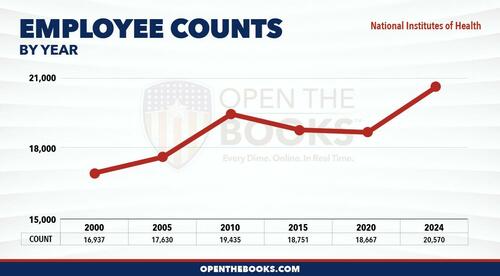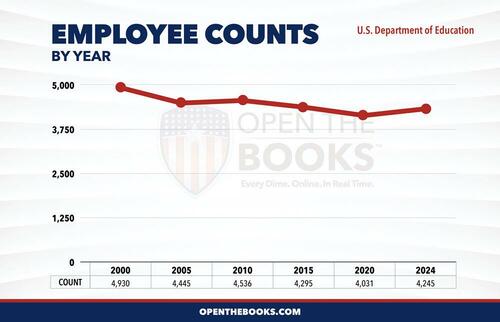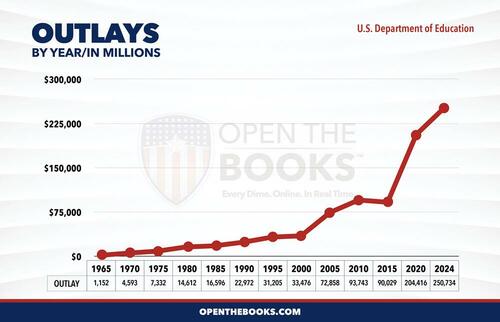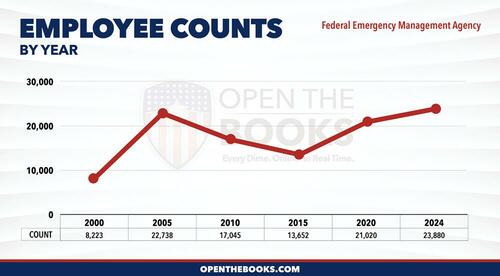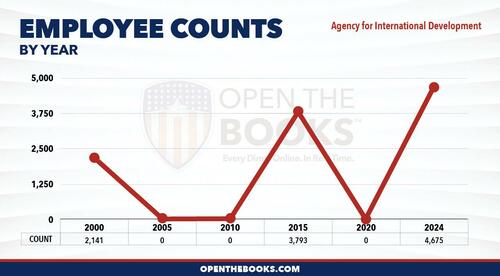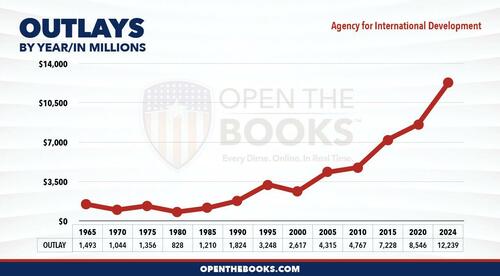

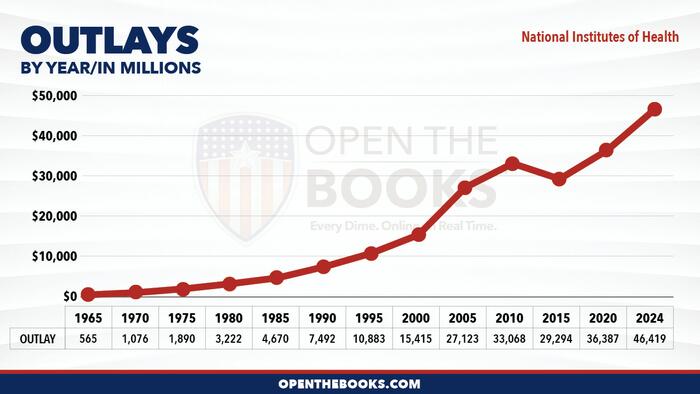
Submitted by OpenTheBooks
As DOGE continues searching for and flagging waste, fraud and abuse across the federal government, American taxpayers are hearing about a lot of outrageous spending – and obscure agencies and projects – for the first time.
The scandalous spending at USAID on foreign programs (think a transgender opera in Colombia) and progressive NGO’s (think The Aspen Institute) set off an explosion of headlines. Separately, our own auditors found $22 BILLION spent by the Office of Refugee Resettlement – a division of Health and Human Services – on aid to migrants since 2020. Again, NGO’s were granted the money to go out and act as ideological proxies for the Biden administration.
It’s become clear that Americans need an exhaustive map of the federal government and how much spending at each agency has grown over time.
When we began that work, we immediately found another problem.
Record keeping within the Federal Register, which is supposed to be the definitive guide to government policy, is shockingly bad.
At least 75 agencies listed there are effectively defunct or obsolete; they’ve been subsumed by other entities, renamed, or don’t even exist any longer.
Not only are agencies listed that are long-defunct, but records of those agencies are often not updated, so members of the public must conduct deep research to ascertain the composition of their own government.
The vast scope of DOGE’s task becomes much clearer in that context.
We doubled down and began taking inventory of the remaining agencies that do exist, so that taxpayers can track the changing number of federal employees per agency and the growth in expenditures over the years. We’re untangling this web in a public database.
By cataloguing every federal agency, it will create a clearer picture of the government as it stands. Where is there duplication? Bloat? Which agencies are mostly sending cash out the door for others to do the work of government?
For DOGE to be as effective as possible, it’s necessary to have the best possible understanding of the status quo as of 2024.
Open the Books will periodically release a list of agencies our auditors have studied, charting their growth, expense and activity over time. Are taxpayers getting their money’s worth? Are they getting anything at all? Regardless of your affiliation, it’s in everyone’s interest to open the books together and find out.
Already, we’ve charted nearly 50 federal agencies as far back as the data goes, tracking the growth in headcount and the growth in outlays (money spent by the agency).
They include the Department of Justice; Department of Defense; Department of Transportation; Department of Homeland Security (and its many subagencies like FEMA, ICE and the Border Patrol); Department of Education; Department of Health and Human Services (which includes the National Institutes of Health, the Centers for Disease Control, the Centers for Medicare and Medicaid Services and the Food & Drug Administration); and an assortment of independent agencies ranging from the now-infamous USAID to the lesser known, like the Administrative Conference of the United States.
We’ll continue updating this list over the next weeks until taxpayers have the full picture. It’s an absolute avalanche of data with historical context, and we invite every concerned citizen, journalist, member of Congress, and DOGE employee to take a close look. There’s an untold number of stories to be mined from these topline numbers!
Critics of DOGE have complained – early and often – that the size of the federal workforce has not grown enormously since the last time cuts were implemented in the Clinton era. Why make cuts when the country has grown and the federal workforce has stayed static? they demand to know.
At agency after agency, a pattern emerges. While headcounts may or may not grow appreciably, spending seems to soar much faster regardless.
Across the political spectrum, there are explanations to be had – it’s not just inflation.
Progressive critics of the efficiency project say the real problem is privatization of government services – private-sector outsourcing like Medicare Advantage or huge equipment contracts signed by the Pentagon. More small-government proponents lament the amount of NGO’s that sop up taxpayer dollars to act as ideological proxies for the administration in power.
SIDEBAR: Our most recent story details shocking amounts of money filtered out of HHS to nonprofit organizations for aid to migrants. Not just life-saving aid, but help with home and auto loans, small business startups, fixes for credit histories, and much more! $22.6 Billion worth. Nonprofit group International Rescue Committee alone received $598 million since 2020! READ MORE.
There’s plenty of data to suggest both can be true, and then some. (We can’t forget improper payments either!)
Take the National Institutes of Health for example. Sure, headcount grew 21.5% higher than in the year 2000. But over the same period, spending has skyrocketed 301% of that figure.
The pattern repeats, even more extremely, at the Department of Education. Employee headcounts actually decreased since 2000, to 13.9% lower. But spending? It rose to astonishing 749% of the prior total.
That calculation looks even more galling on the heels of recent news the American students are not recovering from Covid learning losses – they’ve fallen further behind on reading and made little improvement in math. The National Assessment of Educational Progress—known as America’s report card – showed “growing numbers of students lack basic reading skills,” according to the Associated Press. Peggy Carr, commissioner for the National Center of Education Statistics, told journalists that “poor results can no longer be blamed solely on the pandemic, warning the nation’s education system faces ‘complex challenges.’”
What about the Federal Emergency Management Agency (FEMA)? They’ve come under fire for shortfalls in their Disaster Relief Fund, and for spending big sums to house migrants in hotels. Well, their employee count actually did rise significantly – it’s just that their spending still outpaced it by miles.
FEMA headcount was 290% higher in 2024 than in 2000. But spending swelled more than seven times faster – to 2,096% of the prior spending levels! There has to be a better way to get aid to disaster zones that’s more timely and efficient – and get away from mission creep like migrant housing.
For good measure, we’ll take a look at the Agency for International Development (USAID), as it’s been the subject of so much news. Head count since 2000 has grown 218% larger. But spending has risen to 467.7% of outlays from 2000. That’s a lot of DEI for Serbian workplaces and trans comic books for Peru.


